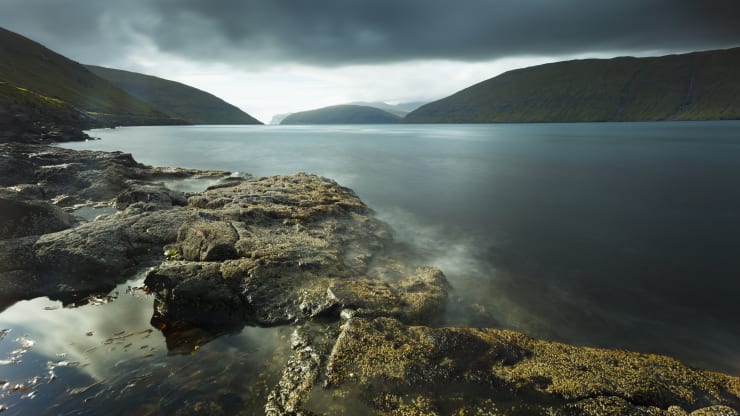Situated in the wilds of the northeast Atlantic between Iceland and Scotland, the Faroe Islands are peaceful, remote and beautiful.
The archipelago is also the site of a trial that, using tidal “kite” technology, could radically alter its energy mix and, in the long run, make it greener.

Source: CNBC
At the beginning of April, Swedish firm Minesto announced that, together with the Faroese utility SEV, it had been granted the necessary permits and consents to install two grid-connected tidal kite systems in the Vestmannasund strait, which is located in the northwest of the Faroe Islands. SEV is the Faroe Islands’ main energy provider.
Minesto’s technology takes the concept of flying a kite and transfers it to the ocean to produce electricity. It does this by harnessing underwater current, which creates a hydrodynamic lift force on the system’s wings, pushing it upward.
An onboard control system and rudder steer the “kite” in a figure-of-eight trajectory. As it moves, water flows through the turbine, producing electricity.
In a statement issued to CNBC, Martin Edlund, Minesto’s CEO, said that the company’s technology was scalable and catered to various energy needs, “from smaller-scale electrification of remote users to utility-scale power production.”
“There is an urgent need around the world to find ways of generating predictable clean energy at a cost-competitive level,” he added.
In February, Minesto and SEV signed a power purchase agreement (PPA) that covers the installation of the two 100 kilowatt systems in the Vestmannasund strait. The PPA amounts to a total installed capacity of 2.2 megawatts and covers the installation of a utility-scale system further down the line. It is hoped that the tidal-kite technology will be launched in the Faroe Islands this summer.
The tidal power trial should be placed within the context of SEV’s overarching goal to be a “100% green energy producer” by the year 2030.
In addition to its ocean-based scheme, the utility is also looking to develop and expand a number of renewable energy technologies, including solar and wind power.
At the present time, some work needs to be done to move the sources of Faroese electricity production away from fossil fuels.
According to SEV’s annual report, thermal power had a 60% share of total electricity production in 2019, with hydropower and wind power taking a 27% and 13% share respectively. In fact, 2019 saw electricity production from sustainable sources fall to 156.1 gigawatt hours (GWh) compared to 171.9 GWh in 2018.
On the subject of tidal energy, Hákun Djurhuus, the CEO of SEV, explained to CNBC via email that it had “been on our agenda for years.”
“Due to its predictable characteristics it fits very well into the Faroese energy mix, which will be 100% sustainable in 2030,” Djurhuus added.
“If tidal energy becomes a technically and economically viable option, our preliminary estimate is that it can account for approximately 30-40% of the total generation in 2030.”
The Faroe Islands are not the only archipelago where tidal power is being developed.
Orkney, which is located in waters off the north coast of Scotland, is home to the European Marine Energy Centre. EMEC, as it’s known, acts as a hub for wave and tidal energy developers to test and assess their technologies in the open sea.
If all goes to plan the center — which has received funding from a range of institutions, including the Scottish and U.K. governments and European Union — will soon be the site of a significant milestone for one tidal energy company.
At the end of March, it was announced that Orbital Marine Power had signed up for a second berth at the center, a development that will enable it to eventually launch a 4 megawatt (MW) floating tidal turbine farm.
Overall, energy derived from the ocean has a long way to go before it becomes mainstream.
Last year, just 1.52 MW of tidal stream capacity was added in Europe, according to Ocean Energy Europe. For wave energy, additions were 0.6 MW.
To put these numbers into some sort of perspective, figures from WindEurope show that European countries installed just over 3.6 GW of offshore wind capacity in 2019.

